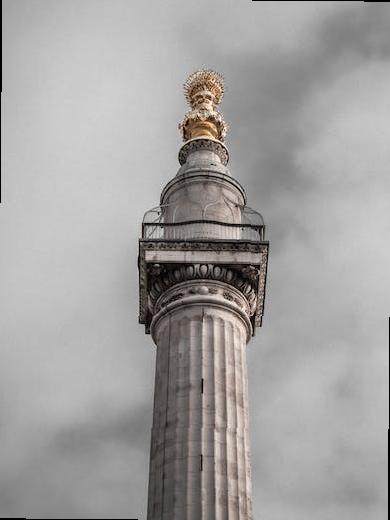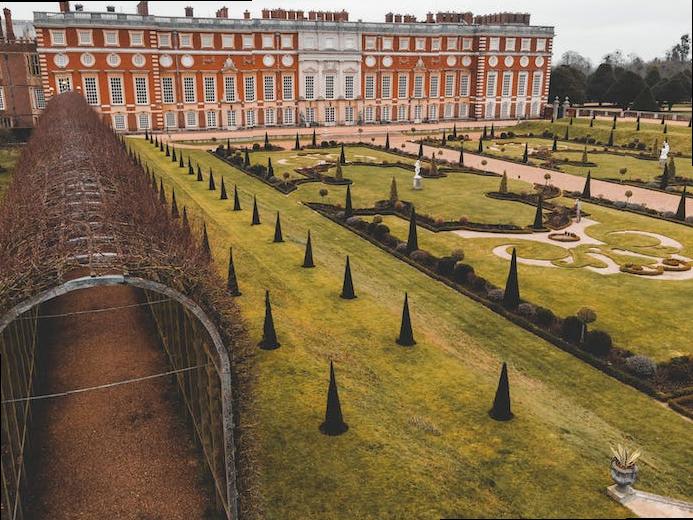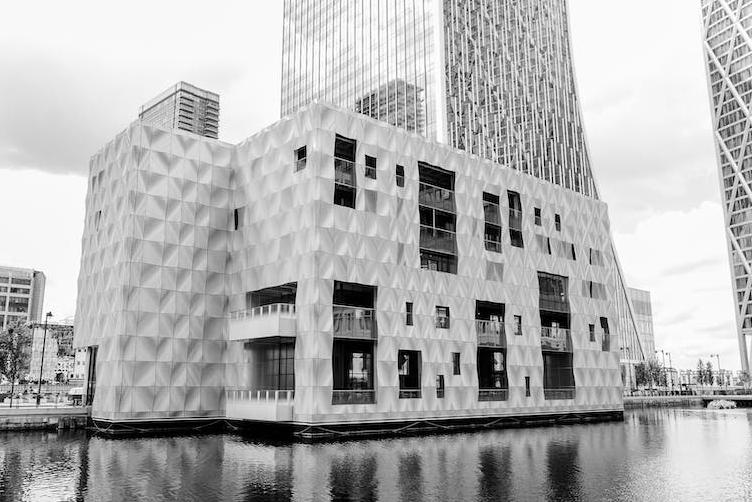London postcodes are one of the most important identifiers for people living in the city. The use of postcodes is particularly important when it comes to distinguishing between East and West London. Both areas have distinct cultural and demographic differences that are reflected in the postcodes they use.
The first letter of a London postcode is indicative of the general area where it is located. Postcodes starting with E indicate East London, while postcodes starting with W denote West London. This distinction is important because it helps identify the location of a place and provides other key information such as the proximity to key transport links and amenities.
East London postcodes have a reputation for being hip and trendy, with many areas being associated with the arts and creative industries. West London, on the other hand, is often considered more upmarket and affluent, with some of London’s most expensive areas located there.
Despite the differences in culture and demographics, both East and West London are vibrant and unique parts of the city. Understanding how London’s postcode system works is essential for anyone looking to navigate the city and explore all that it has to offer.
E1, E2, E3, E4, E5
E1, E2, E3, E4, and E5 are postcode areas in London that represent different geographical regions. These areas are part of the East London postal district and cover neighborhoods such as Whitechapel, Stepney, Bow, and Hackney.
The London postcode system consists of two parts: the outward code and the inward code. The outward code of a postcode contains the area code, which is represented by the first letter(s) of the postcode. In the case of E1-E5, the area code is “E”. The inward code contains a three-digit code that represents a specific street, building or group of addresses within the larger postal district.
London postcodes are designed to be hierarchical, with the larger postal districts covering a wider area and smaller postcodes representing more specific locations. The first part of the postcode identifies whether the address is in Central London (WC and EC), East London (E), North London (N), Northeast London (NE), Northwest London (NW), South London (SE) and Southwest London (SW).
In summary, E1-E5 are postcode areas in East London that represent different geographical regions. They are part of the hierarchical London postcode system, which is designed to identify specific locations within the city.
West London Postcodes:
West London postcodes are part of the larger system of postal codes used in London. The first part of the postcode identifies the broader area, such as W for West London, while the second part narrows it down to a specific district or neighbourhood, such as W1 for Mayfair. There are many postcodes used in West London, including areas such as Hammersmith, Notting Hill, and Chiswick.
Postcodes are an important part of how addresses are structured and used for mail delivery in London. They are also used for a variety of other purposes, such as mapping, tracking crime statistics, and targeting marketing campaigns.
You can explore available properties in London with the help of the government scheme, what is london help to buy. This scheme can provide financial assistance to those looking to buy a home in the city, and can help make the process more accessible and affordable.
Overall, West London postcodes are part of a complex and important system that plays a vital role in the functioning of the city. Whether you’re a resident, a business owner, or a visitor, understanding how they work can be helpful in navigating and making the most of all that London has to offer.
Multicultural Makeup:
Multicultural makeup in London postcodes refers to the diverse ethnic and cultural backgrounds of people living within each postcode area. London postcodes are alphanumeric codes used as part of a postal address in London to identify a specific area or location.
The first part of a London postcode denotes the general area or the district while the second part is more specific and refers to the actual street, building or even a single premise. Given the diverse and multicultural nature of London, postcodes often represent areas with high levels of ethnic and cultural diversity.
For instance, areas such as Ealing, Hackney, Brent, and Newham have some of the most culturally diverse populations in London. These areas host a significant number of Afro-Caribbean, Asian and Eastern European communities, among others, all having a distinct culture, identity and way of life that makes the area unique.
Overall, multicultural makeup in London postcodes ensures that the city stays vibrant and colorful, creating a mix of cultures, and allowing each community to retain its own unique identity while coexisting peacefully with other cultures.
East – Bangladeshi, Indian
London postcodes are alphanumeric codes used by Royal Mail to identify a specific location within the United Kingdom. The first part of the postcode identifies the geographic area of delivery and the second part identifies the specific delivery point. In the context of East London, the E postcode area covers a vast area and includes different ethnic communities such as Bangladeshi and Indian.
The E postcode area covers the eastern part of London, including parts of the City of London, Hackney, Tower Hamlets, Newham, Barking and Dagenham, Waltham Forest, and Redbridge. The area is home to a diverse range of communities, including a significant population of Bangladeshi and Indian origin. These communities have established themselves in areas such as Whitechapel, Bethnal Green, and Ilford.
The E1 postcode area is especially well-known for its Bangladeshi community, with Brick Lane being dubbed as “Banglatown”. The area is renowned for its thriving curry houses and Bangladeshi markets selling everything from saris to spices. Ilford, in the IG postcode area, is also densely populated with a large Indian community, with many Indian shops and restaurants.
In summary, London postcodes work by identifying a geographic area of delivery and a specific delivery point within that area. The E postcode area covers East London, which includes a diverse range of ethnic communities, including a significant population of Bangladeshi and Indian origin.
West – European, American
West-European and American postcodes follow different formats compared to London postcodes. London postcodes mainly consist of two parts, the first being a set of letters and the second being a combination of numbers and letters. The first part of the postcode identifies the area of London, with West London having prefixes of W, NW, SW, and WC. The second part of the postcode further narrows down the location within a particular area.
West-European postcodes have different formats, with some countries using a combination of numbers and letters while others use only numbers. For example, in France, the postcode system consists of five digits, with the first two digits representing the département, and the last three digits representing the specific area within the department.

In the United States, the postcode system, commonly referred to as ZIP Codes, is a five-digit code. The first digit represents a specific region, with subsequent digits narrowing down the location further. However, in some cases, an additional four-digit code is added to further specify the exact location.
Therefore, while West-European and American postcodes follow different formats, London postcodes use a unique system that identifies specific areas within the city.
Affordability:
London postcodes are used to sort and deliver mail to specific areas of the city. However, they are also an important factor in determining the affordability of different neighborhoods.
Postcodes are divided into smaller areas called “postcode districts” which are designated by one or two letters. For example, the postcode district E1 covers areas such as Whitechapel and Stepney in East London.
The affordability of different postcode districts varies greatly. Historically, areas in East and South London have been more affordable than those in the West and North. This is largely due to factors such as availability of housing stock, transportation links, and levels of gentrification.
However, in recent years, there has been a trend of gentrification in many formerly affordable areas of the city. This has led to significant increases in property prices and rental costs in some postcodes.
As a result, affordability in London postcodes is a complex issue that can vary significantly within just a few miles. Understanding the different factors that affect the cost of living in different areas can be crucial for those seeking to live in the city on a budget.
East – Cheaper
London postcodes are an essential part of the city’s addressing system, helping to identify specific areas within the city. The East of London is generally known to be cheaper in terms of living expenses compared to the West. The East of the city is divided into several districts represented by postal codes, such as E1, E2, E3, etc.
For instance, E1 covers areas such as Whitechapel, Stepney, and Wapping, which are among the most affordable in the city. The E2 postcode covers areas such as Bethnal Green and Haggerston, which are also relatively affordable. The E3 postcode covers areas such as Bow and Bromley-by-Bow, which are not as cheap as other areas in the East but are still relatively affordable.
The East of London is known for its vibrant culture, street markets, and diverse communities. Many young people and students choose to live in this area due to its affordable living costs and proximity to universities and job opportunities in the city. Although some parts of the East may still be undergoing regeneration processes, the area has a unique charm and character that attracts many people.

In conclusion, the East of London’s cheaper living costs make it an attractive option for many seeking affordable accommodation and a lively culture.
West – Expensive
The West is generally considered to be the more affluent area of London, hence it is often associated with being expensive. London’s postcodes are arranged in such a way that the further west you go, the higher the number on the postcode, indicating a higher cost of living. For example, areas such as Kensington, Chelsea and Notting Hill have postcodes starting with W8, W11 and SW3, respectively, which are known for their high property prices and luxury shops.

However, it’s important to note that not all West London postcodes are expensive. Some areas such as Acton (W3), Ealing (W5) and Shepherd’s Bush (W12) offer a more affordable cost of living, with a range of shops and amenities available to residents.
Overall, it can be said that the West of London is generally more expensive due to the affluent areas it contains. However, there are also pockets of affordable housing and amenities within the West, making it accessible to a wider range of people.
East – Traditional Terraces
East London is a hub of traditional terraces that are highly sought after in the housing market. The E postcode area covers a large portion of East London, including areas such as Stratford, Hackney, and Bethnal Green. This postcode area is known for its cultural diversity and the availability of affordable homes, attracting young professionals and families alike.
Traditional terraces in this area offer a combination of Victorian and Georgian architecture with stunning front gardens. The E postcode area is home to famous locations such as Brick Lane and Columbia Road Flower Market.
If you’re wondering where to go in London for delicious foodie markets, be sure to check out Borough Market and Camden Market. These markets offer an array of cuisines and local produce, making them a popular destination for locals and tourists alike.
In conclusion, the E postcode area in East London is a vibrant area with traditional terraces and a rich cultural diversity, attracting a range of people from different backgrounds. Alongside this, the area also offers delicious food markets such as Borough and Camden Market for visitors to enjoy.
Transport Links:
Transport links in London are critical for residents, businesses and visitors alike. London postcodes are commonly used as a way of identifying different parts of the city and are organised based on their location relative to the centre of the city. The first one or two letters of a postcode generally indicate the area of the city, such as N for North or SW for South West. The remaining letters and digits usually refer to a specific street or building within that area.
Transport links in London are highly developed and interconnected, making it easy for people to travel within and around the city. Modes of transport range from the iconic red buses and black cabs to the extensive underground network of trains and the overground rail system. London postcodes have a significant influence on these transport links, as many routes are structured around these areas. This makes it easier for people to travel to and from specific places, such as airports or tourist hotspots.
Transport links are essential to London’s economy and social fabric, enabling people to travel for work or leisure. London postcodes provide critical information about how these links are organised and how they function, by grouping areas based on their location and access to transport. Without these transport links, the city’s economy and community would not thrive in the same way.
East – Good Transport
The East London region is served by good transportation links, making it a desirable location for residents and businesses alike. London postcodes work on a hierarchical system, with the first two letters indicating the general area and the last digit providing a more specific location within that area.
The East London region includes postcodes E1 through E20 and is easily accessible by public transportation, including trains, buses, and the London Underground. The region is served by several major stations, including Liverpool Street, Stratford, and Mile End, as well as numerous smaller stations throughout the area.
Residents and businesses in the East London region have easy access to the rest of the city and beyond, with major roadways such as the A13 and the North Circular Road connecting the area to other parts of London and the rest of the UK.
In terms of public transportation, the East London region is convenient for commuters, with numerous bus routes, Overground lines, and Underground lines serving the area. The Jubilee and Central lines both run through the region, providing quick and easy access to the city center and other parts of London.
Overall, the good transport links in the East London region make it an attractive option for those looking to live or do business in the area.
West – Excellent Transport
In London, postcodes are used to identify specific areas for mail delivery purposes. The West of London is known for its excellent transport links, making it a desirable location for both residents and businesses.

Postcodes in the West range from W1 to W14, covering areas such as Mayfair, Paddington, Kensington, and Hammersmith. These areas benefit from an extensive network of public transport options, including the London Underground, buses, and railway services.
For example, W1 is located in the heart of the West End and is known for its world-class shopping and entertainment venues. It is served by several Tube stations, including Oxford Circus, Tottenham Court Road, and Bond Street, making it easily accessible from all parts of London.
Other areas, such as W6 in Hammersmith, benefit from excellent transport links to Heathrow Airport, making it a popular location for businesses with international clients. The West is also home to major transport hubs, such as Paddington Station, which provides connections to national rail services and the Heathrow Express.
Overall, the West of London is a highly desirable location for residents and businesses alike due to its excellent transport links and convenient access to other parts of the city and beyond.
Nightlife:
London has a vibrant nightlife scene, with each postcode area offering its unique atmosphere and entertainment options. London postcodes are a system of geographic identifiers used to divide the city into smaller regions. They typically consist of a letter or letters (indicating the general area) followed by a number or numbers (indicating a more specific location).
Many of the city’s most popular nightlife spots are concentrated in areas with certain postcodes. For instance, Soho (W1) is famous for its bars, clubs, and restaurants, while Shoreditch (E1) is known for its edgy warehouse parties and alternative nightlife scene. Camden (NW1) has a thriving music scene and a plethora of rock clubs and live music venues.
Each postcode area in London can offer a different experience to visitors, so it’s worth exploring each one to find the right fit for your entertainment preferences. Whether you want a sophisticated evening in Mayfair (W1) or a night out in the heart of East London, London postcodes make it easy to navigate the city’s nightlife and find the perfect spot for a great night out.
East – Trendy Bars
East London is home to some of the trendiest bars in London, especially in the postcodes E1, E2, and E8. These postcodes are known for their vibrant nightlife scenes, with a wide variety of bars, clubs, and pubs.
Postcodes in London are structured to identify specific geographic areas. The first half of the postcode identifies the broader area, while the second half further narrows it down to a specific street or building. The E postcode area covers the eastern part of London, including the boroughs of Tower Hamlets, Hackney, and Newham, among others.
Within the E1 postcode, you can find popular bars such as The Culpeper, The Leman Street Tavern, and Discount Suit Company. Moving over to E2, places like The Sun Tavern, Satan’s Whiskers, and The Three Compasses are well-loved by locals and visitors alike. In E8, you will come across Nightjar, a speakeasy-style bar, and Oslo, which is famous for its live music and DJ sets.
These postcodes in East London have become synonymous with trendy bars, attracting a diverse crowd of people. With a wide range of options to choose from, there is always a bar to suit any mood or occasion.
West – Upscale Clubs/Hotels
The West of London is home to some of the most trendy and upscale clubs and hotels, particularly in the SW1, SW3, and W1 postcodes. These postcodes are considered some of the most prestigious in London, attracting a high-end clientele and glamorous lifestyle.
SW1 encompasses Belgravia, Victoria, and Westminster, where visitors can find exclusive clubs such as Annabel’s, private members’ club for a luxurious night out. SW3 covers Chelsea and features some of the most luxurious hotels like The Berkeley, as well as chic bars like Bluebird.
W1 is divided into several areas, including Mayfair, Soho, and Marylebone. Mayfair is considered the most exclusive area in London, home to the famous Claridge’s and The Connaught hotels, along with bars and clubs like Mahiki and Novikov. In Soho, visitors can find some of the most vibrant nightlife in London, ranging from quirky cocktail bars to iconic music venues like Ronnie Scott’s.
Overall, these postcodes carry a certain prestige and offer visitors an indulgent experience in one of the most fashionable areas of London.

Shopping:
London postcodes identify specific geographical areas within the city. The first part of a London postcode, known as the outward code, consists of one or two letters which indicate the general area of London, followed by a digit which further refines the location. For instance, the postcode for Oxford Street is W1B 3AG with “W” being the outward code indicating the West End of London.
Shopping in London can be an exciting experience, as each postcode offers a unique character and retail scene. Postcodes such as W1 and SW1 are renowned for their luxury boutiques, designer stores and high-end department stores. For a more independent shopping experience, East London postcodes such as E1, E2 and E8 are known for their quirky vintage shops, market stalls and street fashion.
Central London postcodes such as WC1, WC2 and EC1 are popular shopping destinations for tourists, with many flagship stores and tourist attractions such as Covent Garden, Oxford Street and the British Museum. Meanwhile, postcodes like SE1 and SE16 boast an array of shopping centres and local markets such as Borough Market and Westfield Stratford City.
Overall, understanding how London postcodes work can help to navigate and make the most of the shopping experience in this cosmopolitan city.
East – Thrift Shops
London postcodes are used to identify specific areas in the city, with each postcode covering a particular geography. The East London area, which includes places like Hackney, Tower Hamlets, and Newham, has numerous thrift shops that offer a range of affordable second-hand items.
Each East London postcode covers a specific area, which can help you find a thrift shop near you. For example, the E1 postcode covers Whitechapel, Spitalfields, and Stepney, among other areas. Some popular thrift shops in this postcode include the East End Thrift Store, which specializes in vintage clothing and accessories, and the St Margaret’s House Charity Shop, which offers a range of second-hand items.
Similarly, the E8 postcode covers places like Hackney and Dalston, and has its own set of thrift shops, including the Hackney Bureau, which offers clothing and homeware items, and the Dalston Oxfam shop, which stocks a range of second-hand clothing and accessories.
Overall, East London postcodes can be a useful way to identify specific areas containing thrift shops, making it easier to find affordable second-hand items in the city.
West – High-End Retailers
West London postcodes are known for being home to some of the most exclusive and high-end retailers in the city. One such postcode is W1, comprising of affluent areas such as Mayfair and Marylebone, which is home to luxury brands like Gucci, Prada, and Louis Vuitton. Similarly, the W8 postcode, which encompasses the prestigious Kensington Palace Gardens, is known for its high-end fashion and jewelry boutiques.
Apart from these areas, West London has many other postcodes that are synonymous with luxury shopping. The SW3 postcode, which includes the upmarket Chelsea neighborhood, is home to King’s Road, which has a mix of designer boutiques, art galleries, and trendy cafes. Additionally, the W11 postcode, including the affluent Notting Hill area, has many high-end fashion stores and independent boutiques.
London postcodes work on a hierarchical system, with different areas assigned different codes. The first letter of each postcode corresponds to a general area of London, with the second letter providing more detailed information about the location. Postcodes beginning with W signify West London, while subsequent letters differentiate between the specific neighborhoods within the area.
Overall, West London postcodes are highly sought after by luxury retailers due to their affluent clientele and prime location in the city.
Cuisine:
London postcodes are alphanumeric codes used to identify different areas within London. When it comes to cuisine, postcodes can be an indicator of the types of food and dining scenes available in a particular area.
For example, postcodes in east London tend to offer a wide variety of diverse and multicultural cuisines including Indian, Bangladeshi, Turkish, and Vietnamese. Popular areas like Shoreditch, Brick Lane, and Dalston are particularly known for their street food and trendy restaurants.
In contrast, postcodes in west London, such as Kensington and Chelsea, may offer more upscale dining options, including Michelin-starred restaurants and high-end British cuisine.
South London postcodes, particularly those around Brixton and Peckham, offer a mix of Caribbean and African-inspired cuisine, as well as hip cafes and gastropubs.
Overall, while London postcodes are not a foolproof indicator of the dining scene in a particular area, they can provide a rough idea of the types of cuisine and dining experiences that may be available.
East – Curry Houses
London postcodes consist of letters and numbers that indicate a specific geographic area. In the East of London, there are many curry houses that are located in different postcodes. For example, Brick Lane in the E1 postcode area is well known for its Indian and Bangladeshi restaurants, whilst the E17 area of Walthamstow has a growing number of trendy street food markets that also offer Indian cuisine.
Other areas known for their curry houses include East Ham and Upton Park in the E6 postcode area, which has many South Asian restaurants catering to the local community. The E14 postcode area of Poplar is also becoming a popular destination for curry lovers, with many new restaurants opening up in recent years.
London postcodes can be used to locate these curry houses and help visitors find the best place to eat. Additionally, the different postcodes provide insight into the diverse communities and cultures that can be found in the East of London. Hence, it’s possible to explore the rich cultural heritage of the city by researching the different postcodes and visiting areas famous for food from around the world.
West – Michelin-Starred Restaurants
London postcodes are split into two parts; the first half indicating the general geographic location, and the second half identifying a specific street or building. West London contains several Michelin-starred restaurants with postcodes beginning with W.
One such restaurant is The Ledbury, located in Notting Hill with the postcode W11. This two-Michelin-starred establishment is renowned for its modern European cuisine and exceptional wine list. Another popular West London Michelin-starred restaurant is Core by Clare Smyth. Located in Kensington with the postcode W8, this elegant eatery focuses on contemporary fine dining using locally sourced ingredients.
La Trompette is another Michelin-starred restaurant in West London, situated in Chiswick with the postcode W4. This stylish restaurant serves contemporary French cuisine and an extensive wine list in a relaxed atmosphere. Meanwhile, Kitchen W8, located in Kensington with the postcode W8, holds one Michelin star and serves modern European cuisine, drawing on British and French influences.
In conclusion, the W postcode area of West London is home to several Michelin-starred restaurants offering diverse and exquisite culinary experiences. With London’s postcode system, it’s easy to locate these restaurants and enjoy their exceptional menus.
London postcodes work as a way of identifying a specific area or location within London. The London postcode system consists of two parts, the outward code and the inward code.
The outward code in a London postcode consists of one or two alpha characters that indicate the general area, for example, SW (South West) or E (East). There are 124 outward codes in London, each of which covers a specific geographic area.
The inward code in a London postcode consists of a numeric or alpha-numeric character that narrows the location down to a specific street or building. This inward code is further divided into two or three characters.
London postcodes are identified based on the location of the delivery point within the city. This means that postcodes can cover a single building or multiple buildings depending on their location.
Postcodes in London were first introduced in 1857 to facilitate the sorting and delivery of mails. Over time, the system has evolved to include more detailed information such as the geographic location and serviceable areas of each postcode. Today, London postcodes are essential for finding and delivering mail and parcels across the city.
Finishing touches
In conclusion, London postcodes are a vital part of navigating the complex and sprawling urban landscape of London. These postcodes provide a system of categorization that allows for seamless delivery of goods and services while also providing a reference point for individuals seeking to navigate the city. The first part of a London postcode, which consists of one or two letters, indicates the broader area of the city in which the postcode resides. The second section, which follows the space in the middle and consists of a number, narrows the location down to a specific district within that area. The final section, which is composed of a letter and number combination, is the most precise and indicates a specific address within the district. The format of the postcode is helpful in quickly identifying the location of an address, and is ultimately essential to delivery services and for locating businesses, restaurants, and other establishments.
Understanding how the London postcode system works is an important aspect of navigating the streets of this sprawling city. With its precise system of categorization, it allows for accurate delivery and easy location identification, while also providing an easy reference for individuals seeking to explore the city. Whether you are a tourist, a resident, or a business owner, it is important to understand how the postcode system works in order to make the most of your time and resources in this bustling metropolis. By taking the time to understand this essential aspect of the city, you can make the most of your time and navigate with confidence, no matter where you find yourself in London.
